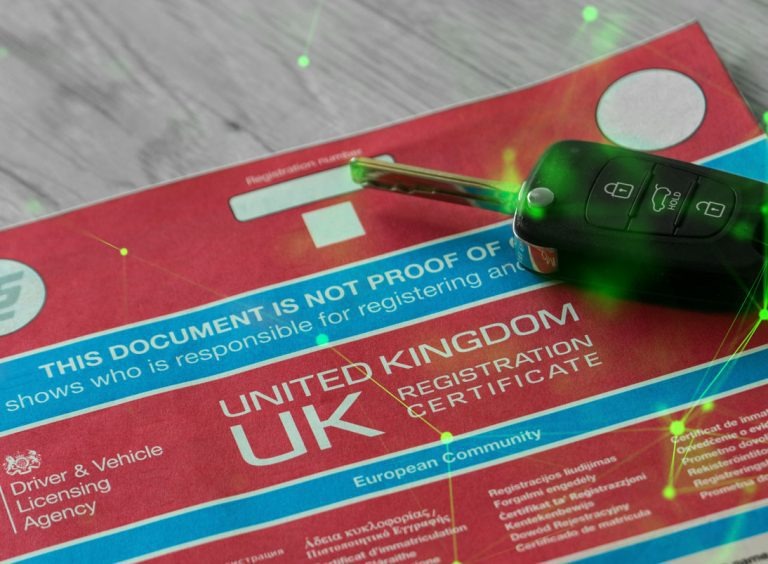What is a Log Book V5C and its Legal Significance.
A log book, also known as a V5C document, serves as the official record of a car’s details and ownership. Issued by the DVLA, it contains essential information like the vehicle's make, model, and registration number. It also includes the owner's name and address.
Legally, the log book is crucial for several reasons. First, it acts as proof of ownership. Second, it is required for taxing and insuring the vehicle. Third, it must be presented during a sale or transfer of ownership. Without it, the process becomes cumbersome and may even lead to fines.
Therefore, keeping the log book updated and secure is a legal obligation for all car owners. Any changes in ownership, address, or other details must be promptly reported to the DVLA.
Importance of Log Books for Car Owners and New Drivers.
Log books are more than just pieces of paper. They serve as proof of ownership, and without them, selling or transferring the vehicle becomes complicated. For car owners, keeping the log book updated is necessary for tax and insurance purposes.
New drivers often overlook the importance of the log book, focusing more on driving skills and road rules. However, knowing what a log book is and how to use it can help new drivers manage their vehicle responsibly. This knowledge can prevent legal issues and make the car ownership experience smoother.
In essence, log books are foundational documents that every driver should understand and keep updated. Failure to do so can result in fines and other legal complications.

What Does a vehicle Log Book Look Like?
The appearance of a V5C logbook is consistent across different types of vehicles, including cars, vans, and HGVs. The document is typically a multi-page form with sections dedicated to various details about the vehicle and its owner.
The logbook includes a unique reference number, which is essential for various online services provided by the DVLA. It also contains a barcode for quick scanning and verification.
What Does a Car Log Book Look Like and is it the Same as Vans and HGVs?
The V5C logbook for cars, vans, and Heavy Goods Vehicles (HGVs) shares a uniform format, ensuring consistency and ease of use across vehicle types. Despite the different vehicle categories, the essential components and layout of the logbook remain the same. The document typically features a multi-page form, vividly colored to distinguish it from other papers. Key sections are systematically organized to provide a clear overview of the vehicle's and owner's details.
In all cases, whether it's for a car, van, or HGV, the logbook includes a unique reference number pivotal for accessing various online DVLA services. This consistency ensures that regardless of the vehicle type, owners can manage their responsibilities effectively using a familiar and standardized document. Maintaining accuracy in this document is imperative for legal compliance, whether you're operating a personal vehicle, managing a fleet, or handling commercial transport.

Detailed Examination of What a Log Book Looks Like.
Many people wonder, "What does a log book look like for a car?" or "What does a V5C logbook look like?" Let's break it down. The log book is a multi-page document printed on red and blue paper. It has several sections, each serving a specific purpose.
The front page usually displays the vehicle registration number, make, and model. Inside, you'll find sections detailing the vehicle's technical specifications, like engine size, color, and type of fuel used. There are also sections for recording changes in ownership.
Each section is clearly labeled to make it easy to find specific information. For instance, Section 6 is where you update the owner's details, while Section 8 is for new keeper details when selling the car. Familiarizing yourself with these sections can save you time and hassle.
Step-by-Step Guide on How to Read a Log Book V5C.
Reading a log book can be overwhelming, especially for new drivers. Here's a step-by-step guide to help you understand what each section means:
- Front Page:
- Vehicle Registration Number
- Make and Model
- Date of First Registration
- Inside Pages:
- Section 1: Vehicle Details (engine size, color, fuel type)
- Section 6: Current Keeper Details (owner's name and address)
- Section 8: New Keeper Details (to be filled when selling the car)
- Back Page:
- Instructions for updating details
- DVLA contact information
By breaking down the document into manageable parts, you can easily find and update the information you need. Always double-check for accuracy to avoid any legal issues.
Common Mistakes to Avoid with Log Books.
Mistakes with log books are common but can have serious consequences. Here are some pitfalls to avoid:
Incorrect Information: Always ensure that the information is accurate. Any errors can lead to fines and complications.
Not Updating Details: Failing to update ownership or address details can result in penalties. Always notify the DVLA of any changes.
Lost or Damaged Log Book: Keep your log book in a safe place. If lost or damaged, apply for a replacement immediately. Driving without a log book can lead to legal issues.
Avoiding these mistakes can save you a lot of trouble and keep your vehicle's documentation in order.

The Future of Log Books: Digital vs Physical.
With advancements in technology, the future of log books is evolving. Many countries are exploring digital log books that can be accessed via apps or online portals. This shift aims to make the process more efficient and reduce paperwork.
Digital log books offer several advantages, such as real-time updates, reduced risk of loss or damage, and easier access. However, they also come with challenges like data security concerns and the need for digital literacy.
While physical log books are still prevalent, the transition to digital formats is inevitable. Staying informed about these changes can help you adapt smoothly.
Conclusion: The Value of Keeping a Log Book and its Implications.
Keeping a log book updated and secure is not just a legal requirement but also a smart practice. It provides proof of ownership, aids in selling or transferring the vehicle, and ensures compliance with tax and insurance requirements.
Understanding what a log book is, what it looks like, and how to read it can make car ownership much easier. By avoiding common mistakes and staying informed about the future of log books, you can manage your vehicle's documentation efficiently.
Worried about maintaining road compliance? To help maintain your vehicle and stay road worthy, use Geo2's Vehicle Checks.
Related posts

What is the Difference Between the DVLA and DVSA?
Every UK driver, vehicle owner, and driving instructor needs to be familiar with the DVLA and DVSA. These two agencies play crucial roles in ensuring the safety and legality of driving on UK roads. Whether you're renewing your driving license or getting your vehicle inspected for roadworthiness, understanding the functions and distinctions of the DVLA and DVSA is paramount. This guide will walk you through their histories, responsibilities, and the latest updates affecting UK drivers.

Mastering the O License: Your Guide to Operator's Licenses
Starting a business as an HGV driver or courier might seem daunting, but obtaining the right licenses can make your path smoother. One crucial license you need to know about is the O license. This comprehensive guide will walk you through what it is, how to get it, and why it's vital for your business.

What is Kerbside Delivery: Efficiency or Risk?
How companies deliver goods depends on what they are and how easy they are to handle. For large or unwieldy items, kerbside delivery is often the preferred method. Kerbside delivery is not a new concept, but it has gained significant traction in recent years, especially with increasing ecommerce and the ease of receiving goods while working from home. Levels of kerbside delivery also saw an uptick under the unique circumstances presented by the Covid pandemic. But what exactly does kerbside delivery entail, and what are the benefits and drawbacks for both delivery companies and customers?
